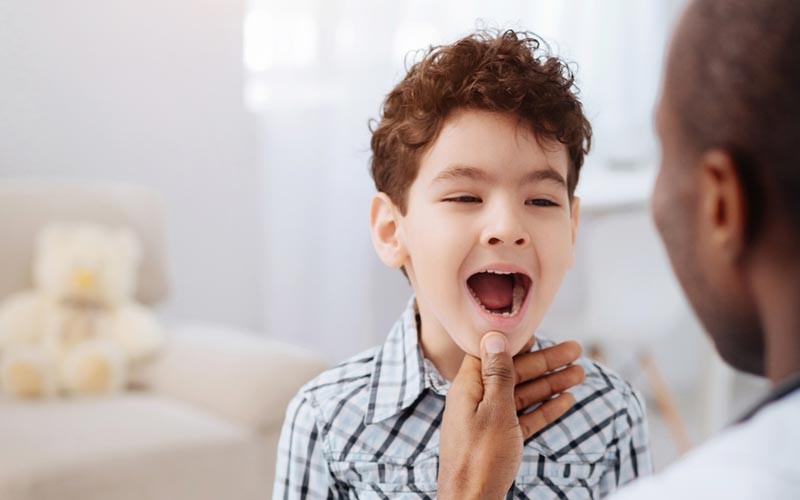Pediatric OSA
Childhood snoring is a very common and prevalent condition. However less appreciated is the presence of obstructive sleep apnea. The peak incidence of childhood OSA is between the ages of 3 and 6 however obese children may present sooner. Aside from obesity, associated conditions include: Enlarged tonsils and/or adenoids, Down's Syndrome, Nasal obstruction due to septal deviation or nasal turbinate hypertrophy, craniofacial abnormalities, or palatal abnormalities. These children may present with a myriad of symptoms which may include daytime sleepiness or fatigue, hyperactivity, difficulty focusing on activities or tasks, nighttime bedwetting, dental abnormalities from chronic mouth breathing and growth abnormalities. Parents will often describe positional symptoms and snoring relieved by neck extension during sleep which is worsened by neck flexion.
To evaluate small children, a sleep study may be necessary to determine the presence of Sleep apnea and whether there is a central or neurologic component.In children over 3, a history and examination may be sufficient to identify obstructive sleep apnea. Teenage children may require a sleep study with anticipation of the use of an oral appliance or even BiPaP/CPAP.
Treatment of OSA in children often begins with the use of nasal steroid sprays, montelukast, or palate expanders. Weight loss may be a management component for older children but is quite difficult and often unnecessary for smaller children. Dietary changes in obese children is certainly suggested for long term management of weight control. For those children with enlarged tonsils/adenoids, surgical removal is the mainstay of therapy. Studies have shown long term success rates at 80% but may be as low as 50% in children with obesity, Down's syndrome, or craniofacial abnormalities. For older children, septal repair may be a necessary part of therapy however cartilage removal should be reserved for children well into puberty.
Some children may snore following surgical therapy however the sleep apnea may be resolved. Sometimes a post treatment sleep study may be required to evaluate the efficacy of therapy and to determine if further treatment is necessary.


